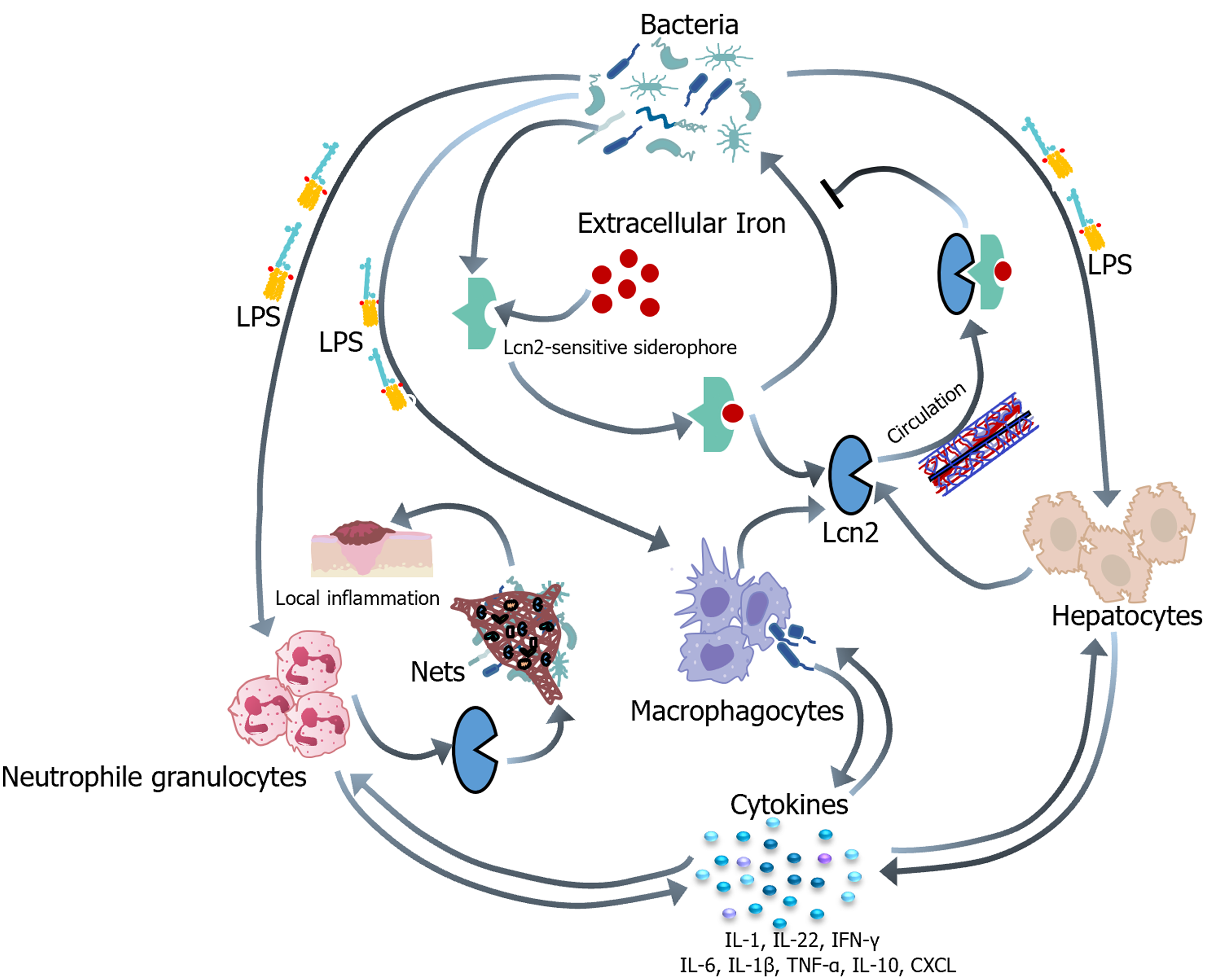Copyright
©The Author(s) 2024.
World J Hepatol. Feb 27, 2024; 16(2): 177-185
Published online Feb 27, 2024. doi: 10.4254/wjh.v16.i2.177
Published online Feb 27, 2024. doi: 10.4254/wjh.v16.i2.177
Figure 1 Schematic outline of lipocalin 2 antibacterial effects.
During bacterial infections, most lipocalin 2 (LCN2) is secreted by liver cells, while some are derived from immune cells such as macrophages and neutrophils. LCN2 exerts an antibacterial effect mainly in two ways. One, it chelates LCN2-sensitive siderophores to form the LCN2-siderophores-Fe complex, which prevents the bacteria from absorbing iron and inhibits bacterial growth. Two, it stimulates the antibacterial immune response through stimulating immunocytes, which secrete various inflammatory cytokines and chemokines, promoting the migration and phagocytosis of macrophages. The cytokines and chemokines from immunocytes then further stimulate immunocytes and hepatocytes to produce more LCN2, forming a positive feedback loop to enhance the antibacterial immune response. LCN2 derived from hepatocytes and macrophages enters the systemic circulation to fight bacteria, and LCN2 is a component of NETs from neutrophils, which plays an important role in local inflammation. LCN2: Lipocalin 2; LPS: Lipopolysaccharide; IL: Interleukin; CXCL: Chemokines; IFN: Interferon; TNF: Tumor necrosis factor.
- Citation: Chen F, Wu SS, Chen C, Zhou C. Dynamic changes and clinical value of lipocalin 2 in liver diseases caused by microbial infections. World J Hepatol 2024; 16(2): 177-185
- URL: https://www.wjgnet.com/1948-5182/full/v16/i2/177.htm
- DOI: https://dx.doi.org/10.4254/wjh.v16.i2.177









